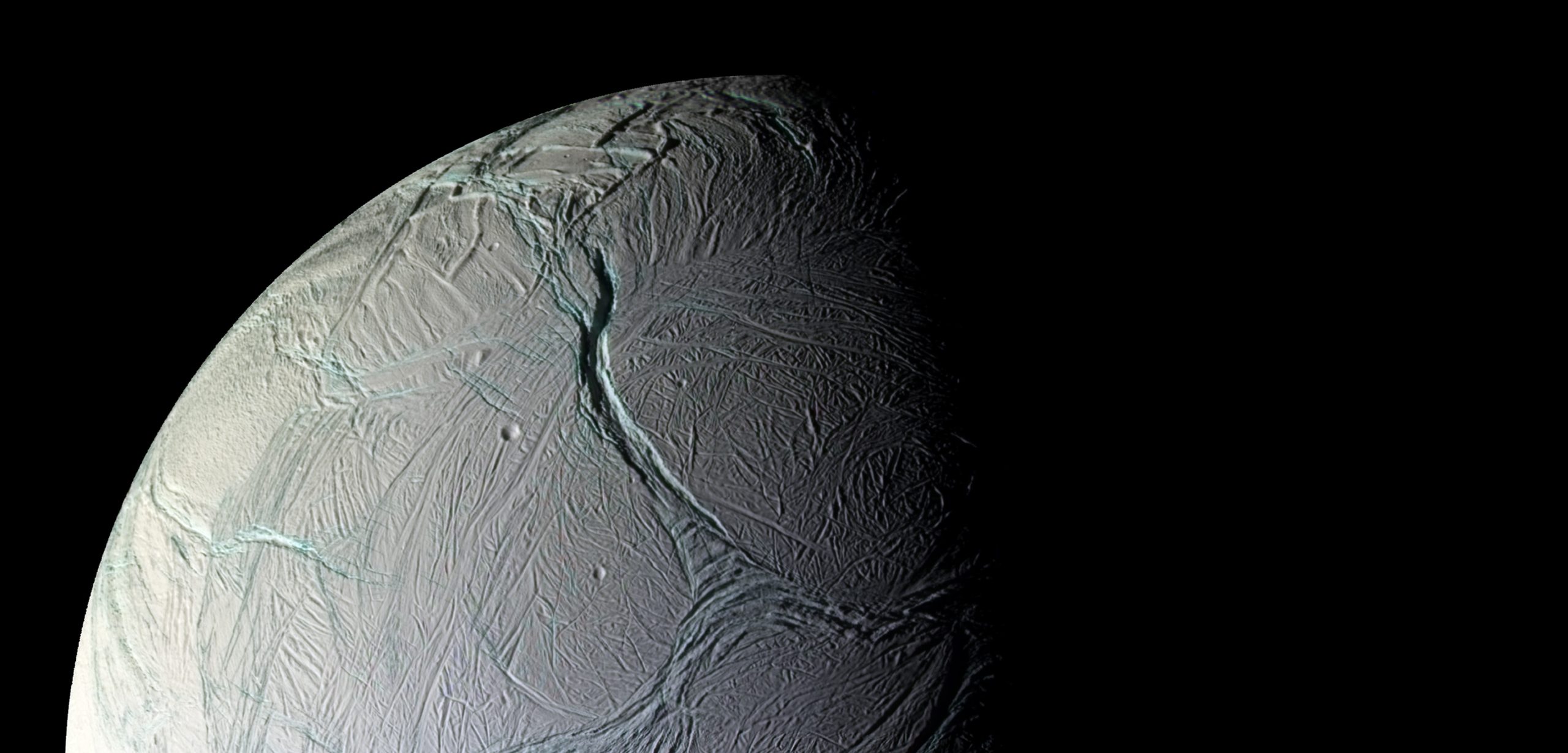Stories from the Seven Seas
A weekly roundup of coastal news.
Article body copy
Hakai Magazine is all about the coast, but other outlets sometimes share our fascination. Every week we round up our favorite coastal stories from around the web.
Vast ocean underlies ice on Saturn’s moon Enceladus
by Nadia Drake for National Geographic
“[A]t Enceladus, evidence that a long-lived reservoir powered the plumes was sparse. Early theories pointed toward a small regional sea, perhaps created by an impact, that could be too young for life to have evolved.
But a global ocean could be stable and long-lived enough for alien microbes to gain a foothold. ‘A global ocean is harder to explain as a short-lived event,’ Hand says. ‘That’s good news for habitability.’”
How an Inuit filmmaker is using virtual reality to tell her culture’s stories
by Anubha Momin for Motherboard
“This immersion is an integral part of what makes virtual reality an important innovation, but for Innuksuk, the technology can have an important cultural purpose as well—especially when it comes to creating indigenous content.
‘I think that allowing people to stand in the ‘virtual’ shoes of a minority group that is struggling with issues of identity rooted in the genocide of its cultural foundations through the residential school system is incredibly important,’ she said.”
Surfing seal rides on the back of a whale in surprise snapshot
by Sandrine Ceurstemont for New Scientist
“Kathy James from the Sea Watch Foundation in the UK, isn’t aware of similar sightings although several internet videos have captured seals trying to ride on a surfboard. ‘It makes sense for any animal to save energy, which could be achieved by hitching a ride on a whale,’ she says.”
What it’s like to stare a hurricane wave in the face
by Jordan G. Teicher for Wired
“‘When it’s in turmoil, as it is during a storm, the ocean is dramatic, it’s scary, and it’s fascinating. It’s just a riveting spectacle. And I became fascinated with creating prints that would show to the viewer the experience and the emotion I felt,’ he says.”
Is fish oil good for you? Depends on your DNA
by Elizabeth Pennisi for Science Magazine
“The results imply that people lacking Inuit DNA may not be getting the same protective effects from this substance, Nielsen says. More work clarifying the connection between high omega-3 and the Inuits’ heart health is needed, but this new work is a good start, adds geneticist Joshua Akey of the University of Washington, Seattle: ‘You can count on your fingers where we have a pretty good idea of what the agent of change was,’ he says. In this case, the connection to diet seems clear.”
Half of the ocean’s population disappeared in the past 45 years
by Mary Beth Griggs for Popular Science
“The report, which looked at 1,234 species of mammal, bird, reptile, and fish, found that between 1970 and 2012, populations declined by 49 percent, with some species hit much harder than others. Commercially valuable species like tuna and mackerel declined by 74 percent, and sea cucumbers (seen as a delicacy in some parts of the world) saw their populations reduced by over 90 percent in specific areas like the Galapagos and the Red Sea.”
Do humans have a future in deep sea exploration?
by Chris Dixon for The New York Times
“[T]oday, Mr. Kerby faces the possible mothballing of his fleet. The forces at play are the same as in many other realms of science — dwindling budgets, of course. And robots.
Robotic subs can stay down for days and reach extraordinary depths, instantly relaying their finds to scientists and an Internet-connected global audience. But they cannot go everywhere, and many scientists argue that studying the deep without direct human observation yields at best an incomplete understanding.
‘You can’t replace a Terry Kerby with a robot,’ said Andy Bowen, principal engineer at Woods Hole. ‘It’s not possible.’”
This Nigerian architect wants to turn Africa’s water slums into floating cities
by Sibusiso Tshabalala for Quartz
“Nearly 70% of Africa’s capital cities—like Lagos, Luanda and Kinshasa—are near water, with many urban dwellers living in bungalows, wooden structures and shacks on water. But rising sea levels, increasing rainfall and climate change threaten many of these structures, leaving water slum residents vulnerable to flooding.
An innovative new form of architecture, argues Adeyemi, could revolutionize these communities, and make them less vulnerable to the elements.”
Revealed: how Indigenous Australian storytelling accurately records sea level rises 7,000 years ago
by Joshua Robertson for The Guardian
“Indigenous stories of dramatic sea level rises across Australia date back more than 7,000 years in a continuous oral tradition without parallel anywhere in the world, according to new research.
Sunshine Coast University marine geographer Patrick Nunn and University of New England linguist Nicholas Reid believe that 21 Indigenous stories from across the continent faithfully record events between 18,000 and 7000 years ago, when the sea rose 120m.”
The world’s biggest manmade wave
by Rebecca Morelle for BBC
“The waves are created by a 10m-high steel wall, that pushes the water back and forth.
By making adjustments to this movement, waves can be made to order: from the choppy waters of stormy seas to a single tsunami surge.
They then travel along a narrow 300m-long tank.
At the end, scientists can place full-scale flood-defence technology, such as dams, dykes and barriers, to see if it can cope with whatever nature can throw at it.”

